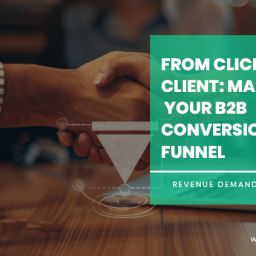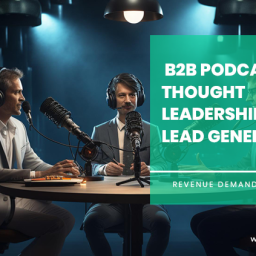Gated Content: High-Value Assets That Drive High-Intent Leads

Gated Content: High-Value Assets That Drive High-Intent Leads
In digital marketing, content is what gets people’s attention. But not every material is equally good at bringing in leads. Blog posts and social media updates may catch the eye of casual visitors, but gated content—resources that users can only access after sharing their contact information—attracts highly interested prospects. By exchanging value for information, businesses can build trust, qualify leads, and guide them down the funnel more effectively.
We will talk about gated content, its benefits, how to use it, and best practices that will help you get not only more leads, but better ones.
What is Gated Content?
Gated content is digital material—such as whitepapers, eBooks, webinars, or research reports—that is only accessible after a user fills out a lead capture form. To unlock it, users must provide information like their email address, company, or job title. This small but significant step filters out casual readers and draws in those who are truly interested in your expertise.
Why Gated Content Works for Leads with Strong Intent
Filling out a form to access a detailed resource shows genuine interest. Unlike someone casually browsing a blog, these users willingly trade personal information for more insights. Such leads are typically further along in their buying journey, making them more open to nurturing campaigns and sales discussions.
Different Kinds of Gated Content That Work
Not every resource is worth gating. To maximize conversions, focus on high-value assets such as:
- Whitepapers and Research Reports – Provide original data or expert opinions.
- eBooks and Guides – Offer step-by-step frameworks to solve specific problems.
- Webinars and Workshops – Deliver live or recorded sessions to showcase expertise.
- Templates and Toolkits – Share ready-to-use, practical tools.
- Case Studies – Present real-life success stories that strengthen credibility.
Finding a Good Mix of Gated and Ungated Content
One of the most common mistakes is gating too much. If even simple resources require forms, users may get frustrated and drop off. Instead, adopt a hybrid approach: share blogs, infographics, and videos openly to build awareness and trust, while reserving premium, in-depth materials for gated access. This ensures a natural progression through the funnel toward high-value offers.
Making Gated Assets That No One Can Resist
For gated content to convert, it must be compelling enough that users are willing to exchange their information. Best practices include:
- Clear Value Proposition – Explain exactly what users will gain.
- Professional Design – Present the content in a polished, trustworthy format.
- Audience Relevance – Connect content to pain points and industry trends.
- Actionable Takeaways – Provide real solutions, not just theory.
The ultimate goal is not just generating leads, but also building credibility and trust.
Making Lead Capture Forms Better
Forms act as the bridge between your audience and your gated content. Even the most valuable asset can fail if the form is poorly designed. Follow these guidelines:
- Keep It Short – Collect only essential details like name and email.
- Progressive Profiling – Request more information gradually over time.
- Mobile Optimization – Ensure forms are easy to complete on smartphones.
- Privacy Messaging – Clearly communicate that user data is secure.
Getting Gated Content Out There and Promoting It
The best content won’t work unless people see it. Promote gated resources across multiple channels, such as:
- Email Marketing – Distribute to segmented lists.
- Social Media Ads – Use platforms like LinkedIn, Facebook, or Instagram.
- SEO – Optimize landing pages to rank for relevant keywords.
- Partnerships – Collaborate with influencers or industry publishers.
The key is to place gated content at touchpoints that influence decision-making.
How to Measure Success and ROI
Tracking results ensures gated content delivers value. Key performance metrics include:
- Conversion Rate – Percentage of visitors who fill out the form.
- Lead Quality – Engagement level and intent of captured leads.
- Pipeline Contribution – Number of leads that move into opportunities.
- Revenue Attribution – Sales generated through gated campaigns.
Evaluating these insights helps refine strategies and double down on what works best.
Things You Should Not Do
Gated content can be powerful but risky if misused. Avoid these pitfalls:
- Gating low-value resources that frustrate users.
- Overly long forms that discourage sign-ups.
- Poorly designed assets that undermine trust.
- Neglecting follow-up, which causes leads to go cold.
By steering clear of these mistakes, your strategy will attract prospects instead of driving them away.
What Will Happen to Gated Content in the Future?
With stricter privacy laws and growing reluctance to share data, the future of gated content lies in personalization and transparency. Instead of one-size-fits-all resources, marketers must create highly relevant assets for specific audience segments. AI-powered tools will also play a bigger role—helping predict user intent, tailor offers, and simplify form-fills.
Conclusion
Gated content continues to be a cornerstone of modern B2B and B2C lead generation. By offering valuable resources in exchange for contact information, businesses can identify and engage with high-intent prospects ready for deeper conversations. Success, however, depends on balance: gate only what’s truly valuable, create a seamless user experience, and follow up strategically.
When executed well, gated content doesn’t just capture leads—it nurtures relationships, builds authority, and drives long-term revenue growth.





